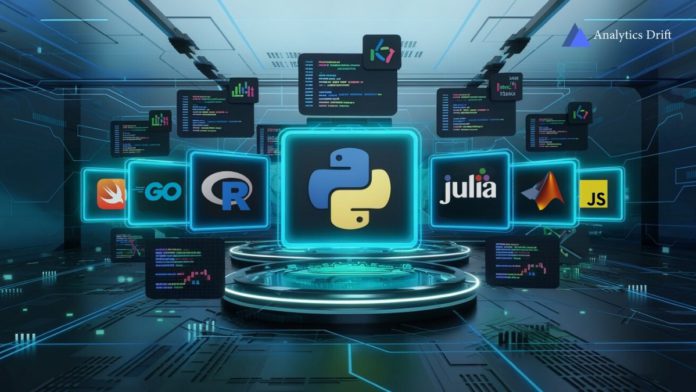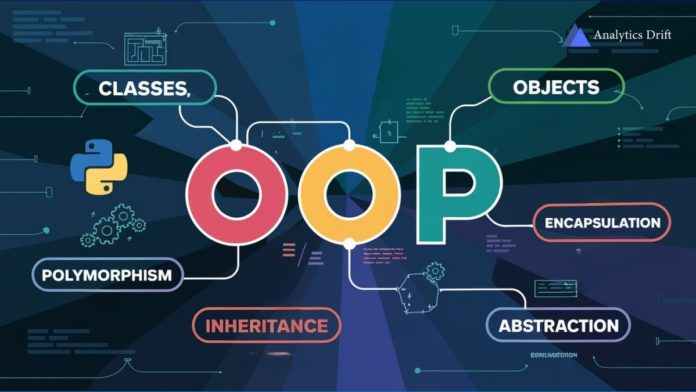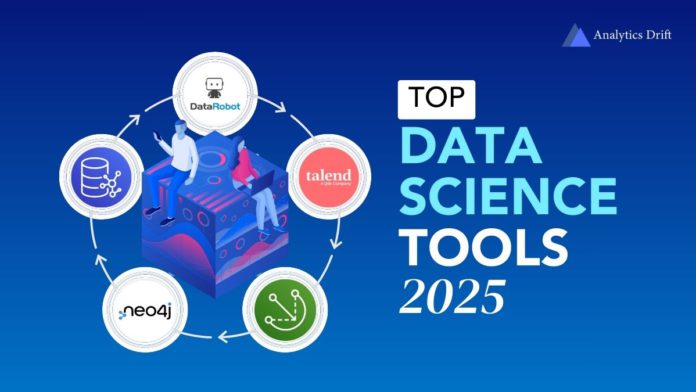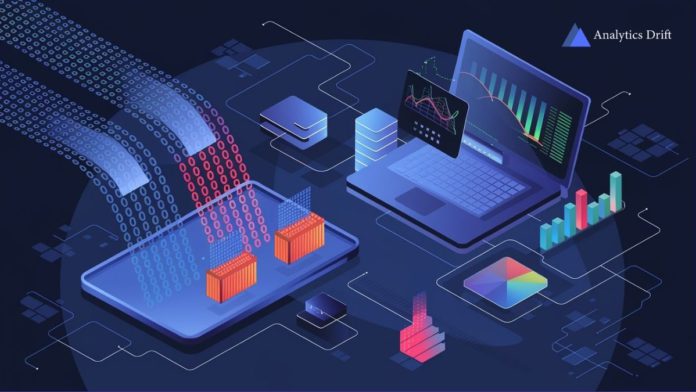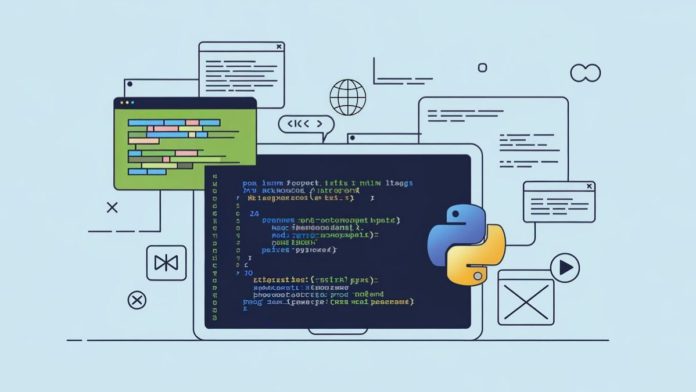If you are starting your career in data science, it is essential to master coding as early as possible. However, choosing the right programming language can be tough, especially if you’re new to coding. With many coding languages available, some are better suited for data science and allow you to work with large datasets more effectively.
This article will provide you with the top 10 data science programming languages in 2024, allowing you to either begin or advance your programming skills. Let’s get started!
What Is Data Science?
Data science is the study of structured, semi-structured, and unstructured data to derive meaningful insights and knowledge. It is a multi-disciplinary approach that combines principles from various fields, including mathematics, statistics, computer science, machine learning, and AI. This allows you to analyze data for improved business decision-making.
Every data science project follows an iterative lifecycle that involves the following stages:
Business Understanding
The business understanding stage involves two major tasks: defining project goals and identifying relevant data sources.
To define objectives, you must collaborate with your customers and other key stakeholders to thoroughly understand their business challenges and expectations. Following this, you can formulate questions to help clarify the project’s purpose and establish key performance indicators (KPIs) that will effectively measure its success. Compile detailed documentation of the business requirements, project objectives, formulated questions, and KPIs to serve as a reference throughout the project lifecycle.
Once you understand the business objectives, you can identify the relevant data sources that provide the information required to answer the formulated questions.
Data Acquisition and Exploratory Analysis
Data acquisition involves using data integration tools to set up a pipeline to help you ingest data from identified sources to a destination. Then, you must prepare the data by resolving the issues, including missing values, duplicates, and inconsistencies.
Finally, you can perform an exploratory analysis of the processed data using data summarization and visualization techniques to help you uncover patterns and relationships. This data analysis allows you to build a predictive model for your needs.
Since data acquisition and exploratory analysis is an ongoing process, you can re-configure your pipeline to automatically load new data at regular intervals.
Data Modeling
Data modeling includes three major tasks: feature engineering, model training, and model evaluation. In feature engineering, you must identify and extract only the relevant and informative features from the transformed data for model training.
After selecting the necessary features, the data is randomly split into training and testing datasets. With the training data, you can develop models with various machine learning or deep learning algorithms. Following this, you must evaluate the models by assessing them on the testing dataset and compare the predicted results to the actual outcomes. This evaluation allows you to select the best model based on the performance.
Model Deployment
In this stage, your stakeholders should validate that the system meets their business requirements and answers the formulated questions with acceptable accuracy. Once validated, you can deploy the model to a production environment through an API. This API enables end users to quickly use the model from various platforms, including websites, back-end applications, dashboards, or spreadsheets.
Monitoring and Maintenance
After deploying the model, it is essential to continually monitor its performance to ensure it meets your business objectives. This involves tracking key metrics like accuracy, response time, and failure rates. You also need to check that the data pipeline remains stable and the model continues to perform well as new data comes in. In addition, you must regularly retrain the model if performance declines due to data drift or other changes.
Role of Programming Languages in Data Science
Programming languages are essential in data science for efficient data management and analysis. Here are some of the data science tasks you can perform using programming languages:
- Programming languages help you clean, organize, and manipulate data into a usable format for analysis. This involves removing duplicates, handling missing data, and transforming data into an analysis-ready format.
- You can use programming languages to perform mathematical and statistical analyses to find patterns, trends, or relationships within the data.
- Data science programming is crucial for developing machine learning models, which are algorithms that allow you to learn from data and make predictions. The models can range from simple linear regression to complex deep learning networks.
- With programming languages, you can create a range of visualizations, such as graphs, charts, and interactive dashboards. These tools help to visually represent data, making it easier to share findings, trends, and insights with stakeholders.
10 Best Data Science Programming Languages
Choosing the best programming language can make all the difference in efficiently solving data science problems. Here’s a closer look at some of the powerful and versatile languages that you should consider mastering:
Python
Python is a popular, open-source, easy-to-learn programming language developed by Guido van Rossum in 1991. According to PopularitY of Programming Language Index (PYPL), Python holds the top rank with a market share of 29.56%.
Originally designed for web and game development, Python’s versatility extends to various fields, including data science, artificial intelligence, machine learning, automation, and more.
If you’re new to data science and uncertain about which language to learn first, Python is a great choice due to its simple syntax. With its rich ecosystem of libraries, Python enables you to perform various data science tasks, from preprocessing to model deployment.
Let’s look at some Python libraries for data science programming:
- Pandas: A key library that allows you to manipulate and analyze the data by converting it into Python data structures called DataFrames and Series.
- NumPy: A popular package that provides a wide range of advanced mathematical functions to help you work with large, multi-dimensional arrays and matrices.
- Matplotlib: A standard Python library that helps you create static, animated, and interactive visualizations.
- Scikit-learn and TensorFlow: Allows you to develop machine learning and deep learning models, respectively, by offering tools for data mining and data analysis.
- Keras: A high-level neural networks API, integrated with TensorFlow, that enables you to develop and train deep learning models using Python.
- PyCaret: A low-code machine learning library in Python that facilitates the automation of several aspects of a machine learning workflow.
R
R is an open-source, platform-independent language developed by Ross Ihaka and Robert Gentleman in 1992. With R, you can process and analyze large datasets in the field of statistical computing. It includes various built-in functions, such as t-tests, ANOVA, and regression analysis, for statistical analysis.
R also provides specialized data structures, including vectors, arrays, matrices, data frames, and lists, to help you organize and manipulate statistical data. One of R’s advantages is that it is an interpreted language; it doesn’t need compilation into executable code. This makes it easier to execute scripts and perform analysis.
R supports data science tasks with some key libraries. including:
- dplyr: A data manipulation library that allows you to modify and summarize your data using pre-defined functions like mutate(), select(), and group_by().
- ggplot2: A data visualization package that enables you to create data visualizations in scatter plots, line charts, bar charts, dendrograms, and 3-D charts.
- knitr: A package that integrates with R markdown to convert dynamic analysis into high-quality reports that can include code, results, and narrative text.
- lubridate: An R library that provides simple functions like day(), month(), year(), second(), minute(), and hour() to easily work with dates and times.
- mlr3: A useful R tool for building various supervised and unsupervised machine learning models.
Scala
Scala is a high-level programming language introduced by Martin Odersky in 2001. It supports both functional and object-oriented programming (OOP) paradigms.
With the OOP approach, Scala allows you to write modular and reusable code around objects, making it easy to model complex systems. On the other hand, the functional programming paradigm helps you write pure immutable functions, where data cannot be changed once the function is created. These pure functions do not have any side effects and are independent of the external state. This multi-paradigm approach makes Scala ideal for developing scalable and high-performance data science projects, especially when handling large datasets.
Scala supports several powerful libraries for data science. Let’s look at some of them:
- Breeze: A numerical processing library that helps you perform linear algebra operations, matrix multiplications, and other mathematical computations in data science tasks.
- Scalaz: A Scala library that supports functional programming with advanced constructs such as monads, functors, and applicatives. These constructs allow you to build complex data pipelines and handle transformations to convert data into usable formats.
- Algebird: Developed by Twitter, this library offers algebraic data structures like HyperLogLog and Bloom filters to help you process large-scale data in distributed systems.
- Saddle: This is a data manipulation library that provides robust support for working with structured datasets through DataFrames and Series.
- Plotly for Scala: A data visualization library that enables you to create interactive, high-quality visualizations to present the data analysis results clearly.
Julia
Julia is a high-performance, dynamic, open-source programming language built for numerical and scientific computing. It was developed by Jeff Bezanson, Stefan Karpinski, Viral B. Shah, and Alan Edelman in 2012.
Julia offers speed comparable to languages like C++ while maintaining an ease of use similar to Python. Its ability to handle complex mathematical operations effectively enables it for data science projects that require high-speed computations. Julia is particularly well-suited for high-dimensional data analysis, ML, and numerical computing due to its speed and multiple dispatch features. Julia’s multiple dispatch system allows you to define the functions that behave differently based on the types of inputs they receive.
Here are some essential Julia libraries and frameworks for data science tasks:
- DataFrames.jl: Provides tools to manipulate tabular data, similar to Python’s Pandas library.
- Flux.jl: A machine learning library for building and training complex models, including large neural networks.
- DifferentialEquations.jl: A library to solve differential equations and perform simulations and mathematical modeling.
- Plots.jl: A plotting library that helps you visualize data and results from scientific computations.
- MLJ.jl: A Julia framework offering tools for data processing, model selection, and evaluation with a range of algorithms for classification, clustering, and regression tasks.
MATLAB
MATLAB (Matrix Laboratory), released by MathWorks, is a proprietary programming language widely used for numerical computing, data analysis, and model development. Its major capability is to manage multi-dimensional matrices using advanced mathematical and statistical functions and operators. Along with the functions and operators, MATLAB offers pre-built toolboxes. These toolboxes allow you to embed machine learning, signal processing, and image analysis functionalities in your data science workflows.
Some popular MATLAB toolboxes for data science include:
- Statistics and Machine Learning Toolbox: It offers pre-built functions and applications to help you explore data, perform statistical analysis, and build ML models.
- Optimization Toolbox: A software that allows you to solve large-scale optimization problems like linear, quadratics, non-linear, and integer programming with various algorithms.
- Deep Learning Toolbox: This enables you to design, train, and validate deep neural networks using applications, algorithms, and pre-trained models.
- MATLAB Coder: Converts MATLAB code into C/C++ for increased performance and deployment of different hardware platforms, such as desktop systems or embedded hardware.
Java
Java was originally introduced by Sun Microsystems in 1995 and later acquired by Oracle. It is an object-oriented programming language that is widely used for large-scale data science projects.
One of the key benefits of Java is the Java Virtual Machine (JVM), which allows your applications to run on any device or operating system that supports the JVM. This platform-independent nature of Java enables it to be a good choice for big data processing in distributed environments. You can also take advantage of Java’s garbage collection and multithreading capabilities, which help you manage memory effectively and process tasks in parallel.
Some libraries and frameworks useful for data science in Java are:
- Weka (Waikato Environment for Knowledge Analysis): Weka offers a set of machine learning algorithms for data mining tasks.
- Deeplearning4j: A distributed deep-learning library written for Java that is also compatible with Scala. It facilitates the development of complex neural network configurations.
- Apache Hadoop: A Java-based big data framework that allows you to perform distributed processing of large datasets across clusters of computers.
- Apache Spark with Java: Provides a fast and scalable engine for big data processing and machine learning.
Swift
Swift, introduced by Apple in 2014, is an open-source, general-purpose programming language used for all iOS and macOS application development. However, its performance, safety features, and ease of use have made it a good choice for data science applications tied to Apple’s hardware and software.
Key libraries and tools for data science in Swift include:
- Swift for TensorFlow: A powerful library that combines the expressiveness of Swift with TensorFlow’s deep learning capabilities. It facilitates advanced model building and execution.
- Core ML: Apple’s machine learning framework that helps you embed machine learning models into iOS and macOS apps, enhancing their functionality with minimal effort.
- Numerics: A library for robust numerical computing functionalities that are necessary for high-performance data analysis tasks.
- SwiftPlot: A data visualization tool that supports the creation of various types of charts and graphs for effective presentation of data insights.
Go
Go, also known as Golang, is an open-source programming language developed by Google in 2009. It uses C-like syntax, making it relatively easy to learn if you are familiar with C, C++, or Java.
Golang is well-suited for building efficient, large-scale, and distributed systems. However, Go’s presence in the data science community isn’t as widespread as Python or R. Yet, its powerful concurrency features and fast execution make it one of the important languages for data science tasks.
Here are a few useful Go libraries for data science:
- GoLearn: A Go library that provides a simple interface for implementing machine learning algorithms.
- Gonum: A set of numerical libraries offering essential tools for linear algebra, statistics, and data manipulation.
- GoML: A machine learning library built to integrate machine learning into your applications. It offers various tools for classification, regression, and clustering.
- Gorgonia: A library for deep learning and neural networks.
C++
C++ is a high-level, object-oriented programming language widely used in system programming and applications that require real-time performance. In data science, C++ is often used to execute machine learning algorithms and handle large-scale numerical computations with high performance.
Popular C++ libraries for data science include:
- MLPACK: A comprehensive C++ library that offers fast and flexible machine learning algorithms designed for scalability and speed in data science tasks.
- Dlib: A toolkit consisting of machine learning models and tools to help you develop C++ apps to solve real-world data science challenges.
- Armadillo: A C++ library for linear algebra and scientific computing. It is particularly well-suited for matrix-based computation in data science.
- SHARK: A C++ machine learning library that offers a variety of tools for supervised and unsupervised learning, neural networks, and linear as well as non-linear optimization.
JavaScript
JavaScript is a client-side scripting language primarily used in web development. Recently, it has gained attention in data science due to its ability to help develop interactive data visualizations and dashboards. With a variety of libraries, JavaScript is now used to perform a few data science tasks directly within the browser.
Some key JavaScript libraries for data science include:
- D3.js: A powerful library for creating dynamic, interactive data visualizations in web browsers.
- TensorFlow.js: A library that allows you to run machine learning models in client-side applications, Node.js, or Google Cloud Platform (GCP).
- Chart.js: A simple and flexible plotting library for creating HTML-based charts for your modern web applications.
- Brain.js: Helps you build GPU-accelerated neural networks, facilitating advanced computations in browsers and Node.js environments.
10 Factors to Consider When Choosing a Programming Language for Your Data Science Projects
- Select a language that aligns with your current skills and knowledge to ensure a smoother learning process.
- Opt for languages with libraries that support specific data science tasks.
- Look for languages that can easily integrate with other languages or systems for easier data handling and system interaction.
- A language that supports distributed frameworks like Apache Spark or Hadoop can be advantageous for managing large datasets efficiently.
- Some projects may benefit from a language that supports multiple programming paradigms like procedural, functional, and object-oriented. This offers flexibility to resolve multiple challenges.
- Ensure the language will help you in creating clear and informative visualizations.
- Evaluate the ease of deployment of your models and applications into production environments using the language.
- Check if the language supports or integrates with version control systems like Git, which are crucial for team collaboration and code management.
- If you are working in industries with strict regulations, you may need to utilize languages that support compliance with relevant standards and best practices.
- Ensure the language has a strong community and up-to-date documentation. These are useful for troubleshooting and learning.
Conclusion
With an overview of the top 10 data science programming languages in 2024, you can select the one that’s well-suited to your requirements. Each language offers unique strengths and capabilities tailored to different aspects of data analysis, modeling, and visualization.
Among the many languages, Python is the most popular choice for beginners and experienced data scientists due to its versatility and extensive library support. However, when selecting a programming language for your needs, the specific factors listed here can help.
Ultimately, the right language will enable you to utilize the power of data effectively and drive insights that lead to better decision-making and business outcomes. To succeed in this evolving field of data science, you should master two or more languages to expand your skill set.
FAQs
Which programming language should I learn first for data science?
Python is a highly recommended programming language to learn first for data science. This is mainly because of its simplicity, large community support, and versatile libraries.
What is the best language for real-time big data processing?
Scala, Java, and Go are popular choices for real-time big data processing due to their robust performance and scalability, especially in distributed environments.
Can I use multiple programming languages in a data science project?
Yes, you can use multiple programming languages in a data science project. Many data scientists combine languages like Python for data manipulation, R for statistical analysis, and SQL for data querying.


